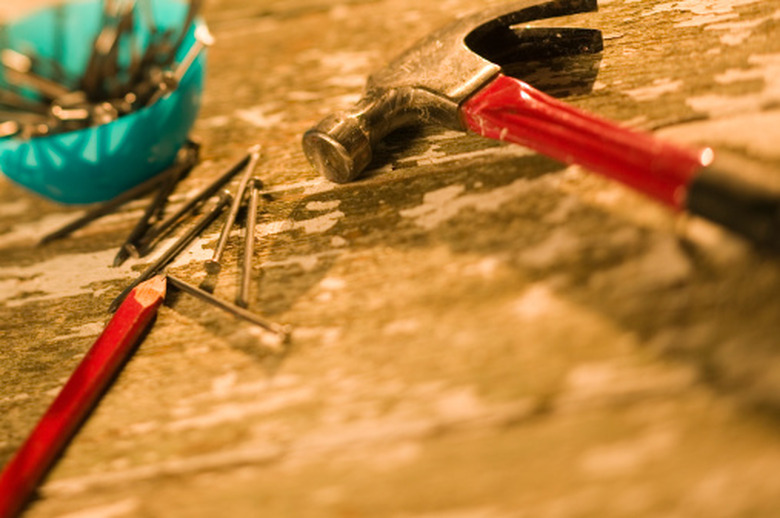How To Explain Nail Pressure On A Balloon Science Fair Experiment Project
The idea that a person can lie on a bed of nails is an idea that dates back to ancient times. In some cultures, this practice was thought to provide physical and spiritual healing. You can apply the principle behind a bed of nails to a simple science project involving a balloon and some nails. You can explain how multiple nails do not burst the balloon through using demonstration, visual aids and written or oral details concerning the physics of pressure.
Step 1
Demonstrate the experiment. Blow up a balloon and poke it with one sharp nail. The result is that the balloon will burst. Prepare a board beforehand in which you drive about 50 nails evenly through a board all within approximately 1/4 of inch of each other. Press a balloon gently on top of these nails to demonstrate how the balloon does not burst.
Step 2
Draw a line down the center of a poster. On one side draw a simple diagram of a single balloon with a nail under it. The pointed end of the nail should be facing the balloon. Draw one line pointing straight upward from the nail toward the balloon, and write, "Concentrated Pressure." On the other side of the poster, draw a balloon with many nails under it. All of the nails should be side by side and pointing toward the surface of the balloon. Draw an arrow pointing upward from each nail and write, "Diffused Pressure."
Step 3
Write or verbally explain the following: When you press a balloon onto one nail, all of the pressure from that nail is concentrated on one small area of the balloon, which results in the balloon's bursting. When you press a balloon onto many nails, it does not burst because the pressure is diffused over a large area.
Things Needed
- Balloons
- Nails
- Board
- Hammer
Cite This Article
MLA
Johnson, Charlotte. "How To Explain Nail Pressure On A Balloon Science Fair Experiment Project" sciencing.com, https://www.sciencing.com/explain-science-fair-experiment-project-7462762/. 24 April 2017.
APA
Johnson, Charlotte. (2017, April 24). How To Explain Nail Pressure On A Balloon Science Fair Experiment Project. sciencing.com. Retrieved from https://www.sciencing.com/explain-science-fair-experiment-project-7462762/
Chicago
Johnson, Charlotte. How To Explain Nail Pressure On A Balloon Science Fair Experiment Project last modified August 30, 2022. https://www.sciencing.com/explain-science-fair-experiment-project-7462762/
